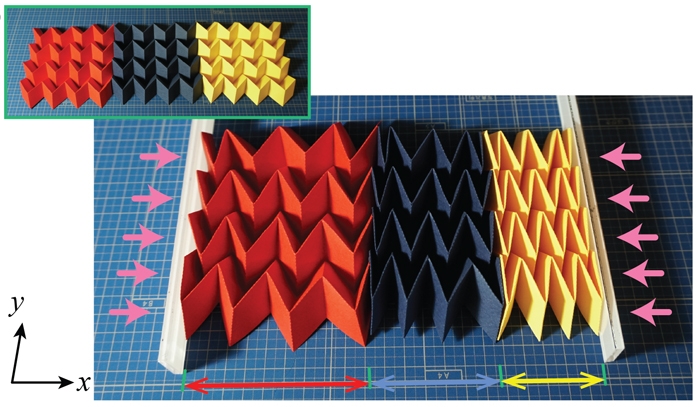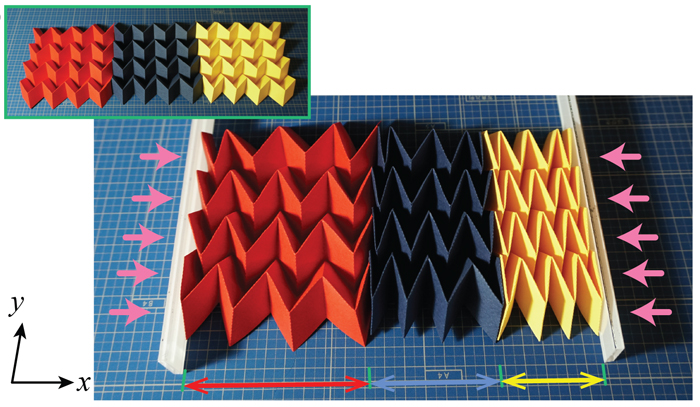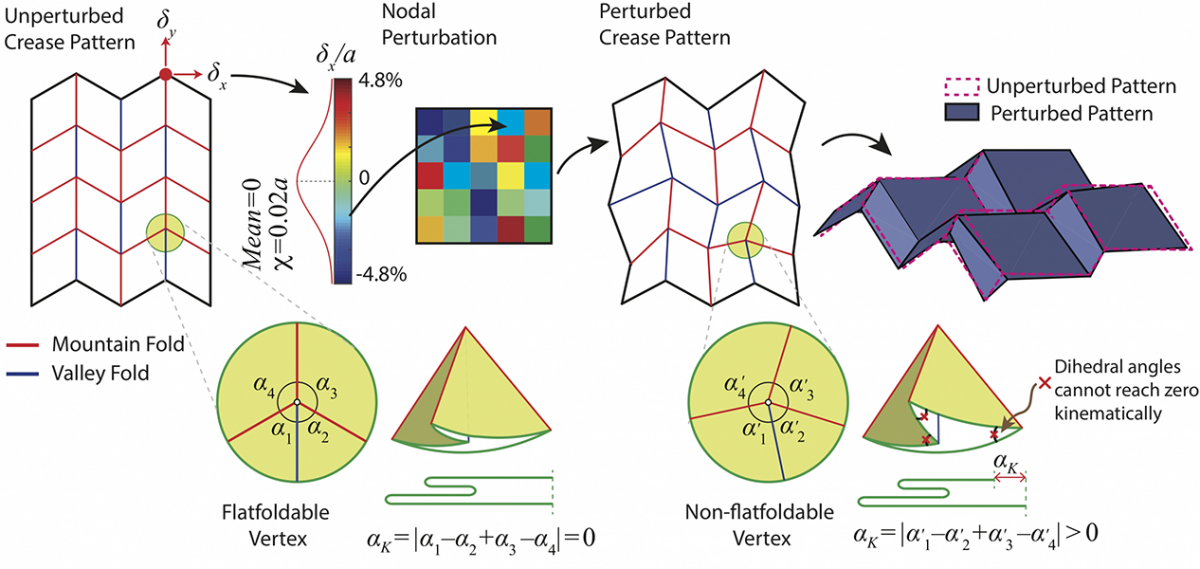
By Kristina Shidlauski
University of Illinois at Urbana-Champaign
There is much interest in the possible use of origami-inspired metamaterials for engineering applications, due to their precisely architected structures that exhibit unconventional behavior. In practice, however, these structures are unlikely to exist without defects and imperfections.
In a new paper published in The Royal Society Journal, researchers from Georgia Tech, the University of Illinois at Urbana-Champaign and the California Institute of Technology explored how slight deviations from a perfect design would impact the functionality of these metamaterials.
Origami-based metamaterials are created by folding sheet materials into patterns, resulting in new materials that have different mechanical properties than their unfolded counterpart and which behave in a way rarely found in natural materials. These metamaterials have great potential for real-world applications, such as micro-robotics, or reconfigurable expanding structures. However, imperfections in their makeup are almost inevitable and that could influence the way they behave.
 |
| Three origami sheets under the same load with different degrees of pattern misalignment (yellow is perfectly aligned, blue is slightly misaligned, and red has relatively strong misalignment). When equal pressure is exerted on each side, the sheets fold with varying degrees of deformity. |
“The fundamental issue here is that when we are doing the folding, we can have an idea of the perfect location for the creases and the vertices of the origami that will have certain theoretical properties,” said Paolo Gardoni, a civil and environmental engineering professor at University of Illinois and co-principal investigator for the study. “However, in the lab when we’re manufacturing – or when the finished product experiences temperature variation or deterioration – the location of the creases is not going to be perfect and it’s going to create a pattern that is not the theoretical one. Now when we pull or push this origami, it will not have the same properties it was designed to have.”
To understand the impact of these types of imperfections, the researchers focused their attention on the Miura origami pattern, the most commonly used pattern for this type of metamaterial. Starting with a theoretically flawless design, researchers ran thousands of numerical simulations using a mathematical model that mimics how the origami would behave with random deviations of the nodes on the crease pattern. They also conducted hundreds of physical tests with slight, deliberate misalignments in the crease patterns.
The data they collected and analyzed showed that random geometric imperfections hinder the foldability of the Miura origami, but on the other hand, increase its compressive stiffness.
 |
| Introduction of geometric imperfections by random nodal perturbations. At each node, the perturbation is decomposed into x- and y-directions. Folding up a perturbed crease patterns results in an imperfect Miura-ori, whose geometry slightly deviates from the perfect Miura-ori as indicated by magenta dashed lines. |
“This is significant because as we use origami for real structures, we need to include the occurrence of these imperfections and – when desirable – we actually can take advantage of them by designing materials that have a target stiffness,” Gardoni said. “We can achieve that by designing appropriate misalignments or imperfections in the origami.”
The paper's authors include Glaucio H. Paulino, civil and environmental engineering professor at Georgia Tech and PI on the project; Georgia Tech doctoral student Larissa S. Novelino, and Ke Liu, postdoctoral researcher at Caltech. The researchers note that this research fills a gap between theory and practice, or between “science” and “engineering.”
“Before this work, there has been no systematic study on the influence of imperfections on origami-based metamaterials, because it is such a new field,” they wrote. “However, eventually, if we want to take advantage of the origami-based metamaterials and use them in engineering applications, we must know how their performance is going to be affected by inevitable imperfections induced during manufacturing and during service.”
This material is based upon work supported by the National Science Foundation under Grant No. 1538830.
